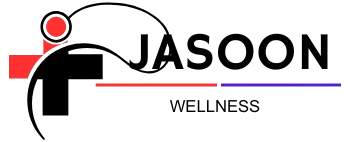Living with ADHD as a therapist offers a unique perspective on the interplay between managing personal challenges and guiding others through theirs. One of the key concepts that I’ve embraced in my journey is the idea of a “Dopamine Menu.” For people with ADHD, dopamine is the brain’s reward chemical, driving motivation, focus, and a sense of accomplishment. Understanding how to harness and replenish it has been transformative for both my clients and me.
In this article, I’ll share the strategies and activities on my dopamine menu that keep me grounded, productive, and aligned with my goals, while acknowledging the ebb and flow of ADHD.
The Role of Dopamine in ADHD
ADHD brains often have lower levels of dopamine, which contributes to challenges with attention, impulsivity, and emotional regulation. Tasks that seem mundane or repetitive may fail to activate the dopamine system, leading to procrastination or frustration. Conversely, activities that are stimulating or novel can ignite a burst of focus and energy.
A dopamine menu is a personalized list of activities that provide joy, reward, or novelty, helping to maintain balance and sustain motivation. By intentionally engaging in these activities, I’ve learned to manage ADHD’s unpredictable nature while enhancing my overall well-being.
Building My Dopamine Menu
Creating a dopamine menu involves identifying activities that resonate with your unique preferences and needs. These can range from quick, energizing tasks to deeper, more immersive experiences. Here’s what works for me:
1. Movement and Physical Activity
Exercise is one of the most reliable dopamine boosters. It doesn’t have to be intense—even small amounts of movement can make a difference.
Morning Yoga: Starting my day with 10-15 minutes of yoga helps calm my mind and energize my body.
Walking Meetings: When possible, I take client calls or brainstorming sessions on the go.
Dance Breaks: A 5-minute dance party to my favorite playlist is an instant mood-lifter.
2.Creative Outlets
Creativity provides a rich source of dopamine by engaging the brain in novel and rewarding ways.
Journaling: Writing down thoughts, ideas, or reflections allows me to process emotions and spark inspiration.
Painting and Drawing: Even if it’s just doodling, engaging in art quiets my racing mind.
Cooking: Trying new recipes or experimenting with flavors satisfies both my curiosity and love of food.
3.Micro-Rewards for Mundane Tasks
Breaking tasks into smaller steps and pairing them with rewards helps me stay productive.
The Pomodoro Technique: Working in focused 25-minute intervals with 5-minute breaks keeps my attention sharp.
Snacking Smart: Healthy treats like nuts or dark chocolate become small incentives.
Music or Podcasts: Playing upbeat music or listening to engaging podcasts makes chores like cleaning or filing paperwork more enjoyable.
4. Connection and Social Interaction
ADHD can sometimes lead to feelings of isolation, so prioritizing meaningful connections is essential.
Therapist Peer Groups: Connecting with colleagues who understand the dual roles of therapist and ADHD warrior is incredibly validating.
Quality Time with Friends and Family: Regularly scheduling coffee dates or game nights helps recharge my social battery.
Online Communities: Engaging in ADHD-focused forums or social media groups reminds me that I’m not alone.
5.Mindfulness and Relaxation
Quiet moments can feel challenging but are essential for resetting my mental state.
Meditation Apps: Guided meditations tailored for ADHD help me stay present and reduce overwhelm.
Breathing Exercises: Simple techniques like box breathing can quickly calm my nervous system.
Nature Breaks: Spending time outdoors, whether it’s hiking or sitting in a park, restores my energy and focus.
6.Learning and Novelty
ADHD thrives on curiosity and exploration, so I incorporate opportunities for discovery into my routine.
Taking Classes: Online courses or workshops keep me engaged and growing.
Reading Diverse Topics: I switch between genres and subjects to maintain interest.
Travel and Exploration: Even a day trip to a nearby town satisfies my craving for novelty.
Tailoring the Menu to Different Days
ADHD symptoms fluctuate, so flexibility is key. On high-energy days, I gravitate toward more ambitious activities like tackling creative projects or diving into professional development. On low-energy days, I lean on simpler options like breathing exercises or a short walk to gently boost my mood.
How the Dopamine Menu Enhances My Work
As a therapist, managing my ADHD is crucial for showing up fully for my clients. The dopamine menu helps me:
Stay Present: Activities like mindfulness and movement ensure I can focus during sessions.
Model Self-Care: Sharing my strategies inspires clients to create their own wellness routines.
Maintain Boundaries: Dopamine replenishment keeps burnout at bay, allowing me to bring my best self to my work.
Encouraging Clients to Build Their Own Menus
I often guide clients with ADHD in creating personalized dopamine menus. We start by exploring activities that resonate with their interests and needs, and then we discuss how to integrate them into daily life. This process empowers them to take control of their ADHD and prioritize their mental health.
Final Thoughts
Living with ADHD has its challenges, but it also fosters creativity, resilience, and adaptability. By curating a dopamine menu, I’ve found ways to navigate my unique brain wiring while thriving as a therapist. Whether you’re managing ADHD yourself or supporting someone who is, consider exploring the concept of a dopamine menu—it’s a practical, empowering tool for unlocking potential and finding joy in everyday life.

